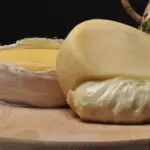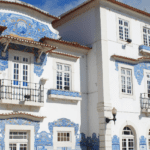Discover Guimarães and the sweets from Guimarães
The history of Vimaranense sweets, their ingredients and which ones you really have to try are described here for a visit to the cradle of the nation. Combine gastronomy with a historical-cultural tour of the city center, classified as a UNESCO World Heritage Site, and have an experience that will stay in your memory.
No doubt that Guimarães is an enchanted city full of treasures, but we can’t resist a good sweet! Fortunately, the tradition of making sweets began in the convents in the borough and has been passed down from generation to generation by several families from Guimarães, so it is possible, on a visit to Guimarães, to taste these delicious delicacies.

Guimarães and the sweet tradition
Guimarães is a land proud of itself, especially in terms of its role in the birth of the Portuguese nation. It is therefore a very popular destination for everyone, whether Portuguese or of other nationalities. It should be noted that the city is a World Cultural Heritage Site. In addition to its historical importance, Guimarães has a relevant heritage wealth, regarding the built heritage and the gastronomic heritage.
If there is something that identifies the gastronomy of Guimarães and makes it stand out from the rest, it is its sweets. And when we talk about heritage, we mean not only the taste, which takes us back to time immemorial, when sweets were made by nuns locked up in convents, but we also mean that it is an integral element of a community, which should be preserved and maintained for future generations.
And if we can talk about something that has been preserved by the people of Vimaran, sweets are an example of that.
Tasting convent sweets at Your Tours
On our Braga and Guimarães tour, one of the highlights of the visit is tasting the city’s conventual sweets. And we are always happy when we see the happy faces of those who try one of these delicacies. And what are the names of those sweets? Here are just a few:
Tortas de Guimarães | Toucinho do Céu | Sopa Dourada Rica | Douradinhas | Rochas da Penha | Broinhas de Amêndoa | Chouriços e Morcelas Doces | Queijadas de Guimarães | Brisas de Guimarães

Manufacturing in convents and the limits imposed
One of the convents that made these sweets was the Convent of Santa Clara, in whose building the Town Hall is currently located.
The oldest references to sweets date back to the 19th century. XVI, which refers to jams and queijadas. However, time passed and the Poor Clares created more sweets, which became famous and much sought after.
It was already at the time of Archbishop D. Rodrigo de Moura Teles that the fame of the sweets seemed to take the nuns away from their other duties, since he imposed a limit on production (135 kg per nun per year), so that they would have time for other tasks. The Poor Clares would not have liked the idea, as we know that in 1730 this limit was revoked. It would be during the time of another archbishop, Gaspar de Bragança, that the nuns would have a little more freedom, particularly in the production of chorizo sausages and sweet sausages. At the industrial exhibition of 1884, the last two abbesses of the convent took part, with calondro jam, orange jam, pear jam, marmalade and bacon of heaven.
It should be noted that it was not only in this convent that sweets were made. They were also made in the Convent of Santa Rosa de Lima, or of the Domínicas (the recipe for sponge cake that was made here still exists today), in the Recolhimento das Trinas and in the Convent of São José do Carmo.

From convents to the present day
Times have changed and today we no longer have convents in the city in operation, however we have a list of pastry houses that maintain the tradition of making sweets, and it is possible to taste these authentic manas on a visit to the historic center World Heritage Site.



